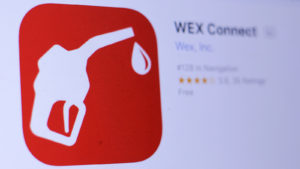The 3 Most Undervalued Fintech Stocks to Buy in February 2023
All three undervalued fintech stocks to buy in February 2023 are significantly up compared to S&P 500. As a result, all three should continue to outperform the index throughout the year.
Typically, when choosing stocks to buy from a specific industry or group well represented by mutual funds, I choose companies from a popular fund. The largest fintech ETF by net assets is ARK Fintech Innovation ETF (NYSEARCA:ARKF), with 659.4 million dollars. This is an actively managed fund from Cathie Wood. It currently has 29 shares. Unfortunately, none of my three undervalued fintech stocks made her cut.
The Global X FinTech ETF (NASDAQ:FINX) have 472.4 million dollars in net assets distributed among 66 holdings. All three of my choices missed the cut once again.
However, you don’t need to worry. The names on this short list of undervalued fintech stocks are all well-run businesses with plenty of growth ahead on both the top and bottom lines. They range from $2 billion in market capitalization to nearly $20 billion. They are listed in order of how confident I am that you will make money from each in the long term.
| SIVB | SVB Finance Group | $323.21 |
| WEX | Wex | $188.41 |
| BFH | Bread Financial Holdings | $42.79 |
SVB Financial (SIVB)

Source: Pavel Kapysh / Shutterstock.com
SVB Finance Group (NASDAQ:SIVB) is a diversified financial company with four operating segments: Silicon Valley Bank, SVB Capital, SVB Private and SVB Securities. The company, which was named one of America’s best banks by Forbeshelps innovators and entrepreneurs grow their businesses by providing banking products and services.
With $212 billion in assetsa loan portfolio of $74 billion and $342 billion in client funds under administration and management, SVB Financial is likely to catch investors’ eyes as they return to tech stocks with some confidence.
SVB Financial has been my favorite bank stock for years. It is down 46% over the past 52 weeks. However, it has come to life in 2023, gaining more than 40% year-to-date and 29% since the company reported its fourth-quarter and full-year results on January 19.
Profits were significantly lower in the quarter, with net income of $275 million compared to $371 million a year ago and $429 million in Q3 2022. However, it reported that its customer base was starting to do slightly better financially, giving hope for the future. In addition, loans at the end of the period were $74.3 billion, 2.9% higher than the previous quarter. And non-GAAP core fee income of $349 million was 10.4% higher than in the third quarter.
The shares trade at a price-to-book ratio of 1.6, well below the five-year average of 2.5.
WEX (WEX)

Source: PREMIO STOCK / Shutterstock.com
WEX (SNEEZE:WEX) like to say that it is “the global trading platform that simplifies the business of running a business.” It offers fleet cards, fuel management, B2B payments, benefit management and much more solutions through its robust platform. The company’s growth strategy revolves around winning new customers, increasing existing customers’ use of the products and services, adding to the offers, expanding geographically and making strategic acquisitions.
In late November, Wex announced that it had launched The WEX Motorpass Driver app in Australia. The app allows fleet vehicle drivers and employees in construction, retail, manufacturing and other industries to find the best available fuel prices near them in real time.
“The WEX Motorpass Driver App ensures that these businesses, and their drivers, can always find the most cost-effective rate available. The revenue saved can be used by business owners for multiple purposes, including investment for growth or back into the business,” the company’s press release said on the 28th. November.
So although fleet cards are a large part of the operating segment for fleet solutions, the products and services go far beyond a credit card.
More than 80% of the company’s revenue is recurring. In the first nine months of 2022, despite $136.5 million in impairment charges, its adjusted operating income was 697 million dollars44% higher than in 2021.
Trading at just 16.2x after 12 months free cash flow on 508 million dollars and 3.8 times salesthe share is more than reasonably priced for a long-term purchase.
Bread Financial Holdings (BFH)

Source: Joyseulay / Shutterstock.com
If you’re a New York Yankees fan, you might want to give Bread Financial Holdings (SNEEZE:BFH) a closer look. 26 January, the provider of payment, lending and savings solutions announced a co-branded New York Yankees Mastercard that will hit the diamond just before the start of the 2023 Major League Baseball season.
With this credit card, users get 5% back on all purchases at Yankee Stadium, 3% back on dining, gas, carpooling and transit, and 1% back on all other purchases. Indicative of Bread Financial’s tech-forward approach to its business, attendees will be able to enter the stadium, scan a QR code to register for the card and use it from their digital wallet while at the game. It’s a win-win for Yankees fans.
In March 2022, Bread Financial became the mother changed name from Alliance Data Systems to Bread Financial Holdings to assume the identity of Bread, the $450 million digital payments company Alliance acquired in 2020.
In 2022, the company’s revenue increased by 17% to $3.83 billion. Pretax earnings before provisions were $1.89 billion in 2022, up 19% from the prior year. Pre-tax earnings before provisions have now increased double-digit YOY for seven consecutive quarters.
By all financial calculations, the BFH share is cheaper today than it has been in the last five years. So it is a long-term buy for aggressive investors.
At the date of publication, Will Ashworth did not hold (either directly or indirectly) any positions in the securities mentioned in this article. The opinions expressed in this article are those of the author, with reservations InvestorPlace.com Guidelines for publication.


